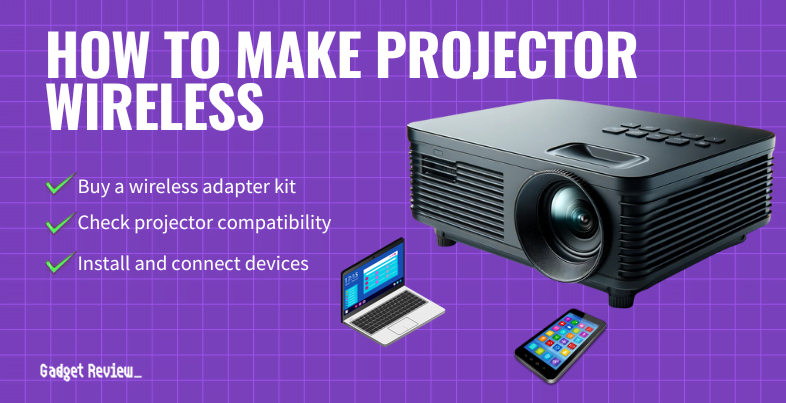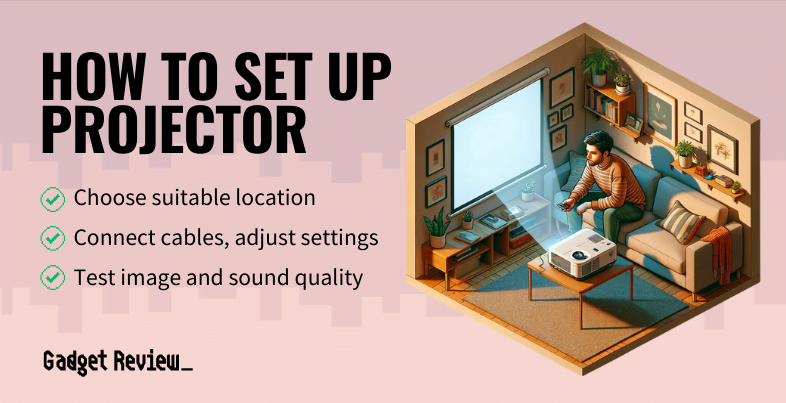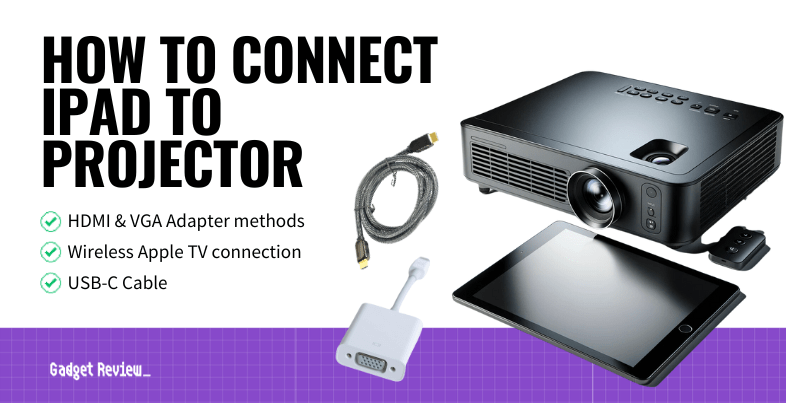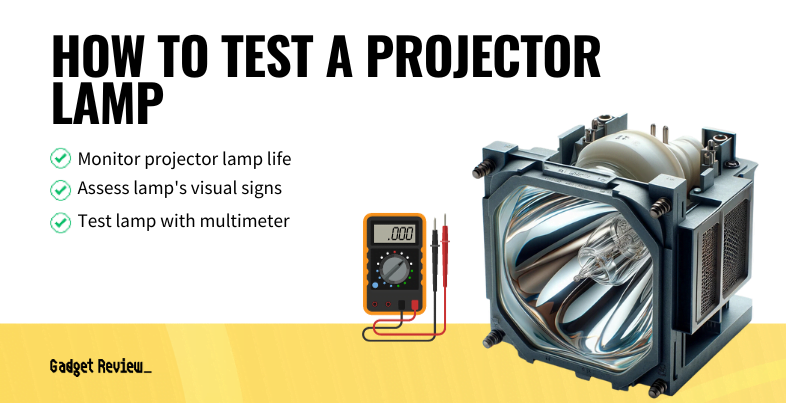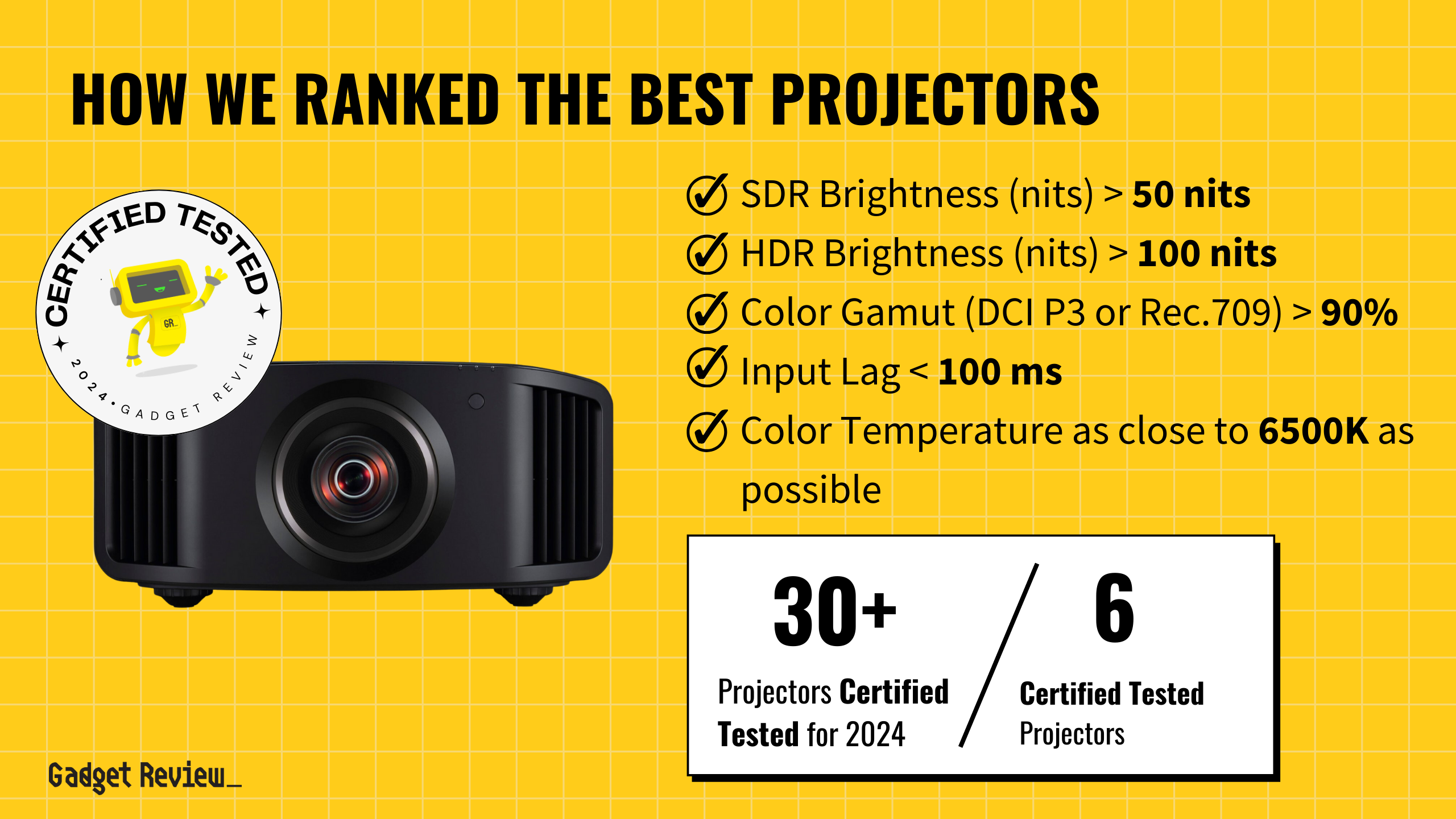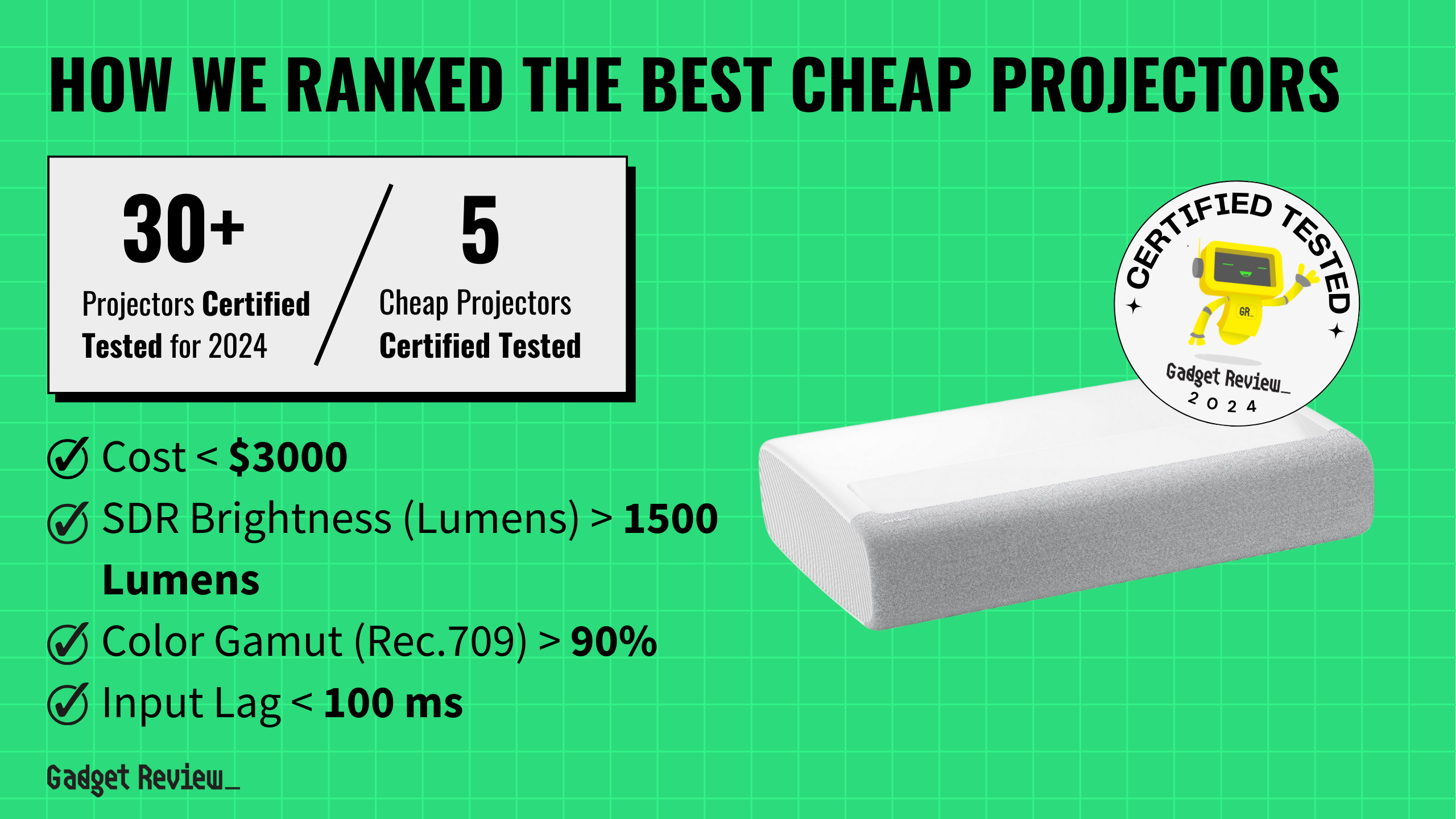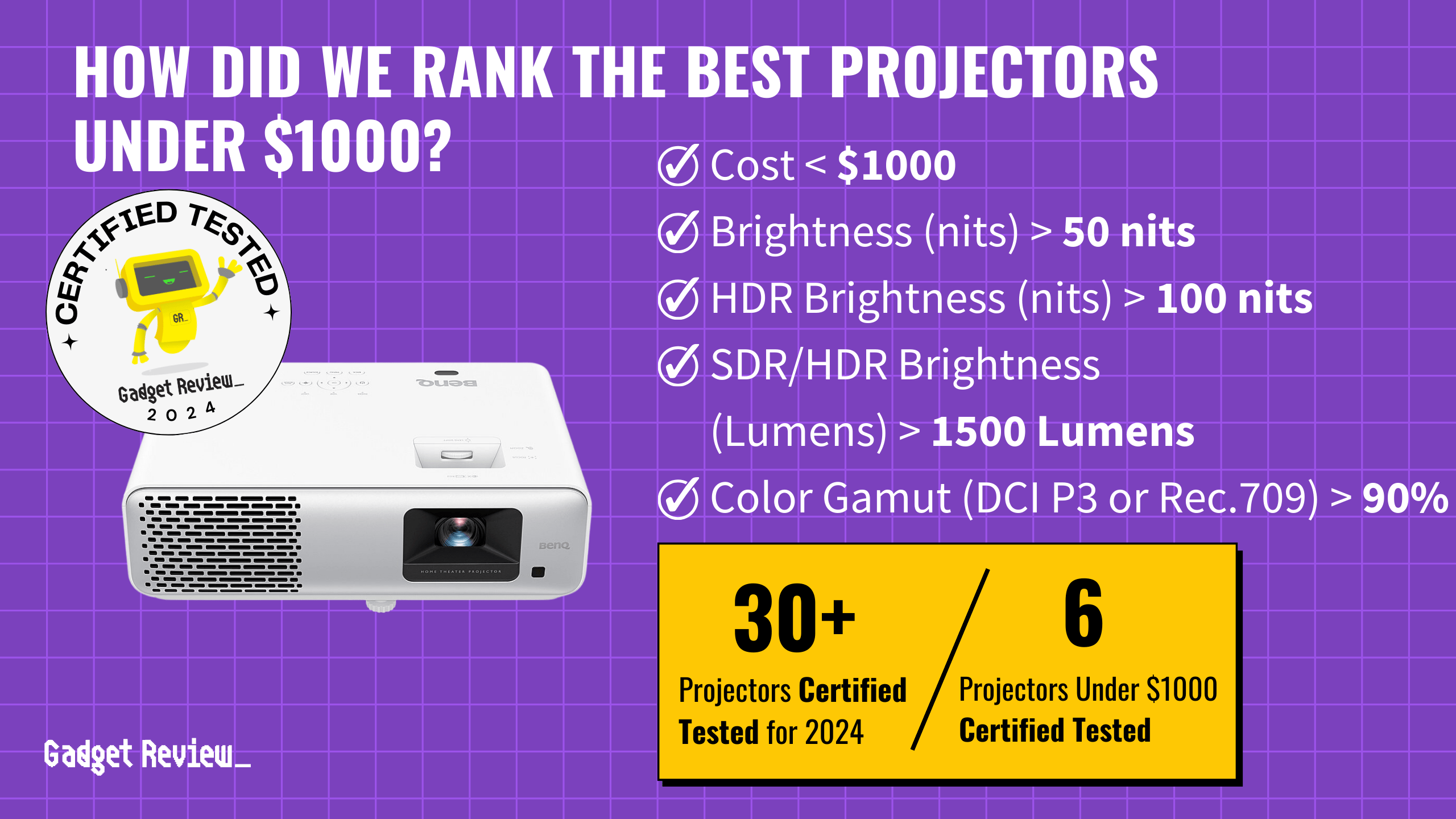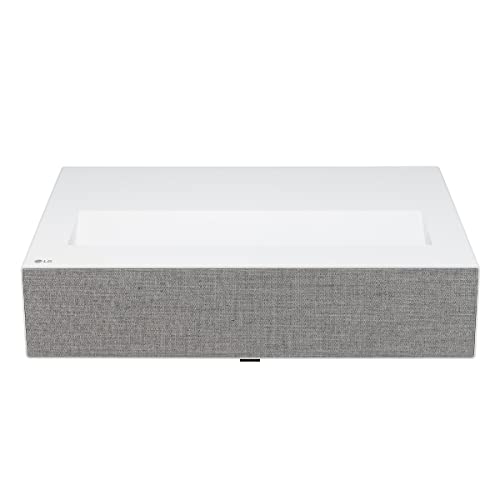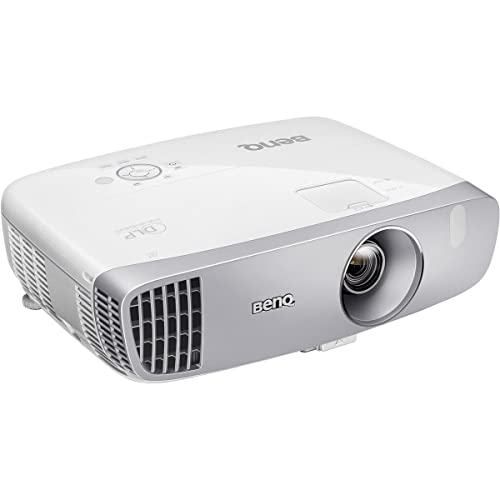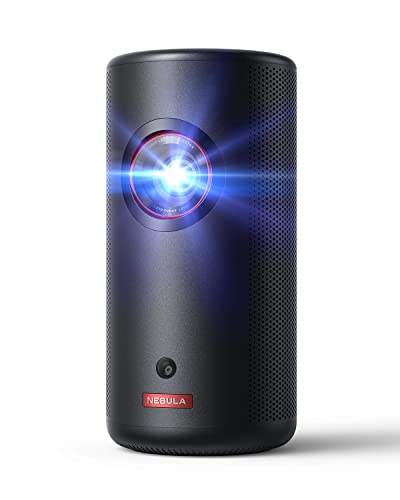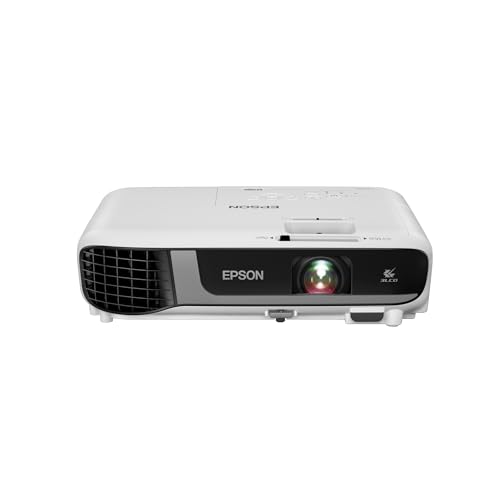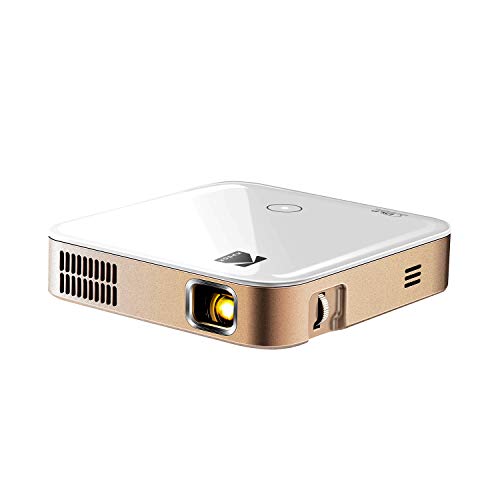Gaming projectors let you enjoy your favorite games on a massive screen, giving you that immersive feel without needing a giant TV. When picking one, focus on features like low input lag, bright display, and excellent color accuracy. We evaluated over 30 projectors, analyzing 10,439 reviews, and identified 4 winners.
Our process includes verifying products as tested and filtering out fake and low-quality reviews using our True Score system. These fantastic projectors excelled in testing, showcasing minimal input lag, high brightness, and superior color accuracy, making them ideal for immersive gaming experiences.
How Did We Rank the Best Projectors for Gaming?
Creating the ultimate guide to the best projectors for gaming required us to scrutinize over 200 websites. We assessed diverse testing methods, gathered customer opinions, and incorporated expert reviews to distill the most crucial criteria for gaming performance. This process led us to identify 1 required test result and 2 beneficial features that gamers should consider when choosing a projector.
Our commitment to unbiased reviews is powered by our ‘True Score’ system, targeting low quality and fake reviews. When you shop through our links, you’re backing our mission. Dive deeper to see how.
Test Criteria
- Input Lag: An input lag of less than 15 milliseconds to prevent delays between what’s on screen and your reaction to them in games.
? “Nice To Haves”
- Color Gamut: At least 90% of the DCI P3 color gamut, providing rich and vibrant colors.
- SDR/HDR Brightness: Equal to or greater than 1500 lumens or more to help produce a bright and clear display.
Latest Updates
- 06/13/2024: Republished the list to include the best projectors for gaming based on our True Score system.
Top Projectors for Gaming For 2025
Prices accurate at the time of publishing

Best Overall

Runner Up

Best Value

Best Budget

Best Mid-Range

Premium Pick
JVC DLA-NP5
Best For Gaming
The JVC DLA-NP5 excels in gaming with its fast response time and exceptional color accuracy, making it a solid choice for immersive gaming and versatile multimedia use.
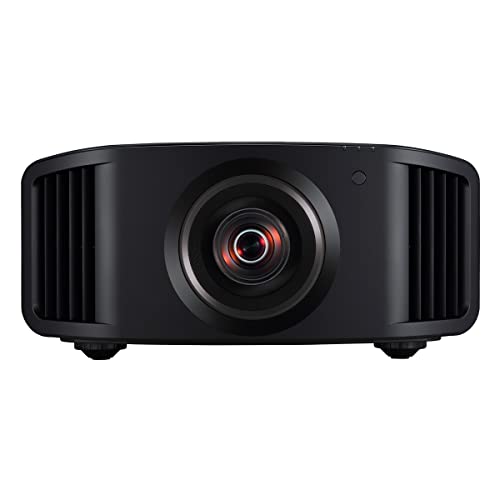
True Score
94942Experts
9716Customers
Cosmic Wonder
 SAVE $2$5,999.95$2,999.99
SAVE $2$5,999.95$2,999.99Read More
Snapshot
Reasons to Buy
- Good brightness rating
- High image quality
- Low input lag
Reasons to Avoid
- Large in size
Specifications

Resolution 4096 x 2160 Refresh Rate 240 Hz 
Display Technology D-ILA 
Contrast Ratio 400,000:1 
Digital Keystone Yes 
HDR HDR10, HDR10+, Hybrid Log-Gamma (HLG) 
Max Distance 510" 
Max Screen Size 200" 
3D Ready Yes 
Aspect Ratio 17:9 
Brightness 1900 Lumens 
Depth 19.5" 
Height 9.2" 
Integrated Speakers No 
Light Source Lamp 
Light Source Life 3,500 hrs 
Min Distance 74.4" 
Min Screen Size 60" 
Noise Level 24 dB 
Portable No 
Smart Functionality No 
Sync Technology n/a 
TV Tuner No 
ThrowType 1.40:1 – 2.80:1 
Weight 42.3 lbs 
Width 19.6" Yes – All Specs
Test Results
SDR Brightness (Lumens) 1,465 HDR Brightness (Lumens) 1,460 Contrast Ratio (x:y) 0 Input Lag (ms) 20 Color Gamut % (Rec. 709) 132 Color Gamut % (DCI P3 uv) 89 SDR Brightness (nits) 0 HDR Brightness (nits) 0 SDR Color Temperature (K) 0 HDR Color Temperature (K) 0 Color Gamut % (Rec. 2020) 0 Color Gamut % (BT.2020) 60 Color Gamut % (BT. 709) 0 All Tests
All Retailers
- $2,999.99$6,000Save $2
- $6,999.99
Our Verdict
The JVC DLA-NP5 is perfect for gaming thanks to its excellent responsiveness and wide aspect ratio, but it’s got a price tag to match. Unlike other 4K projectors that output at 16:9, the NP5 puts out video at 17:9, with a resolution of 4096×2160, letting you immerse yourself into games just a little bit more than standard aspect ratios allow. The projector also features an input lag of just 19.5 milliseconds, ensuring that the action on the screen matches your inputs with minimal delay.
Color-wise, the NP5 achieves 88.5% of the DCI P3 color space, which is great for watching movies and works well for games, thanks to the wider coverage of the DCI gamut compared to the standard gaming gamut (sRGB.) The projector also boasts a refresh rate of 240 Hz, which helps reduce visual tearing when playing video games at a high frame rate.
Beyond gaming, the JVC DLA-NP5’s capabilities make it versatile for other multimedia applications. It’s a 3D-ready projector, making it a great choice if you enjoy watching 3D movies. The NP5 also features a Frame Adapt HDR mode to help create darker, more dynamic scenes when watching films and helps mitigate some of the issues projectors can often have with darker scenes. With a 200” maximum screen size, the projector can also produce an image large enough to fully immerse you in any kind of content you enjoy.
Regarding gaming, the JVC DLA-NP5 does a fantastic job, but it also holds its own when it comes to watching movies, thanks to many useful features. Its great color performance and low input lag make it an excellent choice for a gaming setup in your home theater without worrying about overspecializing – but this comes at a steep cost.
Read Less

Best Overall

Runner Up

Best Value

Best Budget

Best Mid-Range

Premium Pick
BenQ X3000i
Best For Bright Room
With exceptional color accuracy and high brightness, the BenQ X3000i is ideal for gaming in bright rooms and versatile entertainment despite its lower refresh rate.
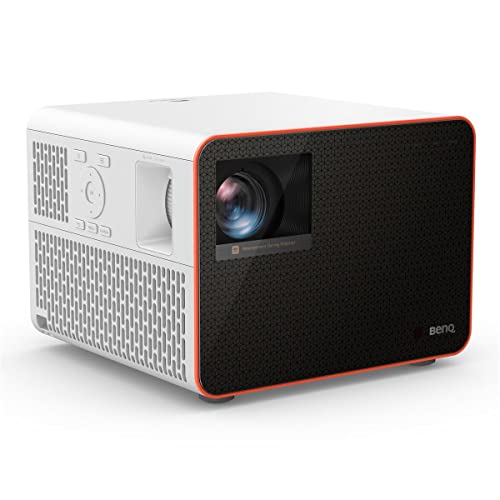
True Score
86877Experts
89352Customers
Absolutely Fresh
 SAVE $200$1,999.00$1,799.00
SAVE $200$1,999.00$1,799.00Read More
Snapshot
Reasons to Buy
- Good brightness levels
- Excellent image quality
- Exceptionally low input lag
Reasons to Avoid
- No Netflix app
Specifications

Resolution 3840 x 2160 (4k) Refresh Rate 60 Hz 
Display Technology DLP 
Contrast Ratio 500,000:1 
Digital Keystone Yes 
HDR Yes 
Max Distance 228" 
Max Screen Size 200" 
3D Ready Yes 
Aspect Ratio 16:9 
Brightness 3000 lumens 
Depth 10.2" 
HDMI Type 2.0 
Height 7.8" 
Integrated Speakers Yes 
Light Source LED 
Light Source Life 20000 hrs 
Min Distance 69.6" 
Min Screen Size 60" 
Noise Level 32 dB 
Portable Yes 
Smart Functionality Android TV, Bluetooth, Google Assistant, Google Cast, USB 
Sync Technology CinemaMaster 
TV Tuner No 
ThrowType Standard Throw 
Video Inputs HDMI 2.0, USB, VGA 
Weight 14.1 lbs 
Width 10.7" All Specs
Test Results
SDR Brightness (Lumens) 2,875 HDR Brightness (Lumens) 0 Contrast Ratio (x:y) 0 Input Lag (ms) 17 Color Gamut % (Rec. 709) 0 Color Gamut % (DCI P3 uv) 99 SDR Brightness (nits) 0 HDR Brightness (nits) 0 SDR Color Temperature (K) 0 HDR Color Temperature (K) 0 Color Gamut % (Rec. 2020) 0 Color Gamut % (BT.2020) 75 Color Gamut % (BT. 709) 0 All Tests
All Retailers
- $1,799.00$1,999Save $200
- $1,999.00
- $2,516.12
Our Verdict
If you’re looking for a gaming projector that works well in brighter rooms, the BenQ X3000i offers an advanced light source and excellent color accuracy. The standout feature is the high brightness level of 2875 lumens. This allows the projector to perform well not only in the typical dark environments you’d use a projector in but also in rooms with ambient light, making it versatile for both indoor and occasional outdoor use.
Hitting an impressive 99.24% DCI P3 color space coverage, the X3000i can produce vivid and accurate colors for both movies and games. Additionally, the BenQ X3000i boasts an exceptional input lag of 17.2 milliseconds, which helps reduce the delay between your own inputs and the action on screen. With a maximum screen size of 200”, any kind of content can be rendered on an impressive scale.
The greatest downside to the X3000i is that it’s stuck at a 60 Hz refresh rate. Any kind of gaming content you play will be full of visual tearing if you don’t lock the framerate to 60 fps. This is less of an issue for console gaming, but 120 fps has become progressively more common, and it’s already common for PC gaming, so this low refresh rate will impact smoothness and visual clarity.
BenQ’s X3000i is an excellent choice for gamers looking to upgrade their visual setup, especially if they’ve got to set up in a brighter room and still want a flexible option for varied entertainment purposes, from gaming to movie nights. With its superior color accuracy and great input lag, it is a projector capable of easily tackling any kind of content and does so at an attractive price.
Read Less
Did you know 82% of projector reviewers are untrustworthy?
Our research found only 16 of 86 projector reviewers as of December 2025 can be trusted. This is why Gadget Review is committed to calculating the most accurate product scores on the web.
To do this, we give every projector review site a Trust Rating, which measures how trustworthy the site and their testing claims are. We then leverage AI & a machine learning model to combine and calculate the Trust Rating with data from experts and consumers to deliver the True Score, the web’s most accurate product quality rating.
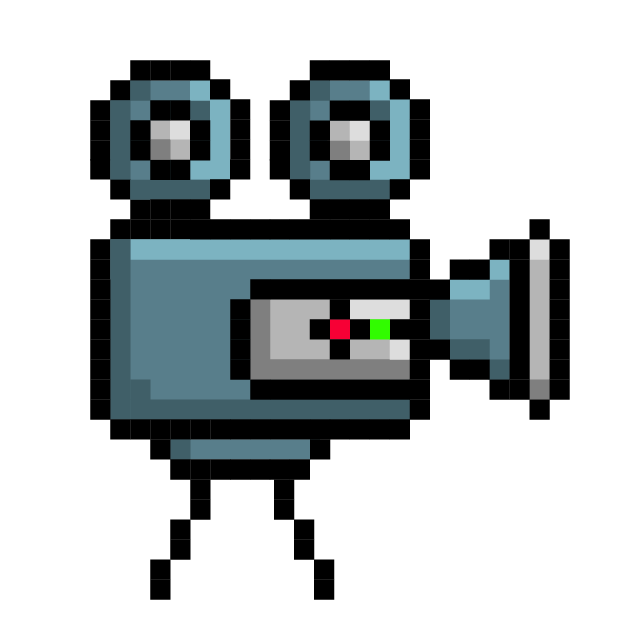 10,439
10,439Projector Reviews Analyzed

30
Total Products Analyzed

Best Overall

Runner Up

Best Value

Best Budget

Best Mid-Range

Premium Pick
Optoma UHZ50
The Optoma UHZ50 offers top-tier responsiveness and impressive brightness, making it a standout choice for gamers who enjoy high-quality movie viewing on a large scale.
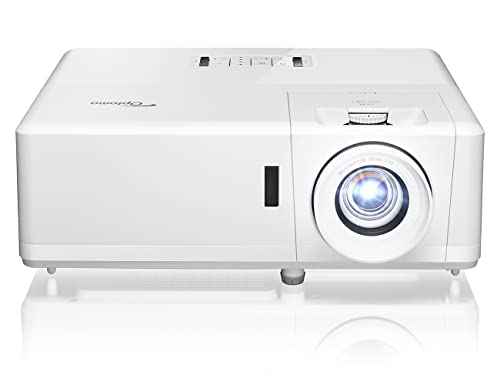
True Score
82824Experts
86167Customers
Absolutely Fresh
 $1,148.95
$1,148.95Read More
Snapshot
Reasons to Buy
- High brightness
- Great image quality
- Exceptionally low input lag
Reasons to Avoid
- Average black levels
- Slight color banding and rainbow artifacts
- No HDMI 2.1
Specifications

Resolution 3840 x 2160 (4k) Refresh Rate 240 Hz 
Display Technology DLP 
Contrast Ratio 2,500,000:1. 
Digital Keystone Yes 
HDR Yes 
Max Distance 319.2" 
Max Screen Size 300" 
3D Ready Yes 
Aspect Ratio 16:9 
Brightness 3000 lumens 
Depth 10.43" 
Height 4.82" 
Integrated Speakers Yes 
Light Source Laser 
Light Source Life 30,000 hrs 
Min Distance 40.68" 
Min Screen Size 85" No – 
Noise Level 27 dB 
Portable Yes 
Smart Functionality Yes 
Sync Technology – 
TV Tuner Yes 
ThrowType Standard Throw 
VRR n/a 
Video Inputs HDMI 2.0, RS232, USB 
Weight 6.8 lbs 
Width 13.27" All Specs
All Retailers
- $1,148.95
- $1,699.99$2,799Save $1,099
- $2,799.00
Our Verdict
The Optoma UHZ50 features a best-in-class input lag of just 17 milliseconds if you’re after the most responsive gaming projector possible. This low input lag helps cut the delay between your inputs and the action you see on screen, which is essential for competitive gaming. It’s worth noting, however, that projectors still don’t meet the times that monitors do, so if you’re obsessing over minimal input lag, you might want to consider a monitor instead. On the other hand, the refresh rate of the UHZ50 is right on par with some of the fastest monitors out, coming in at 240 Hz, ensuring that any game you play is tear-free, no matter your frame rate.
With a considerable brightness output of 2503 lumens, the Optoma UHZ50 offers clear and vivid images, even in environments with ambient light, so you can set this projector up in home theater that doesn’t quite get fully dim. It outputs 4K as well, meaning that images are bright, clear, and extremely detailed. Compared to the much more expensive JVC DLA-NP5, the UHZ50 is brighter, slightly more responsive, and outputs a larger max screen size (all the way up to 300”), but it doesn’t hit the same aspect ratio. If you favor a more cinematic format, the NP5 is better – barely.
The Optoma UHZ50 is an excellent choice if you prioritize a seamless blend of speed, clarity, and functionality in your gaming projector. It meets the demands of modern games and is flexible enough to cater to a broad range of entertainment needs, from movies to TV shows. It can blow up to a truly staggering size without a staggering price.
Read Less

DON’T SEE WHAT YOU’RE LOOKING FOR?
For outdoor entertainment, a top outdoor projector ensures bright and clear images even in less-than-ideal lighting conditions. If space is a concern, the best short-throw projector can project large images from a short distance. Budget-conscious buyers will find a cheap projector that delivers decent performance without breaking the bank.
Pair your projector with a great projector screen for optimal image quality and clarity. For portability, an excellent mini projector is perfect for on-the-go presentations or movie nights. These options cater to various needs and budgets, providing a range of choices for projector enthusiasts.

Best Overall

Runner Up

Best Value

Best Budget

Best Mid-Range

Premium Pick
BenQ TK700STI
Best For Classroom
Offering 4K resolution and effective brightness, the BenQ TK700STI is a budget-friendly option for gamers, though its 60 Hz refresh rate may limit high-frame-rate gaming.
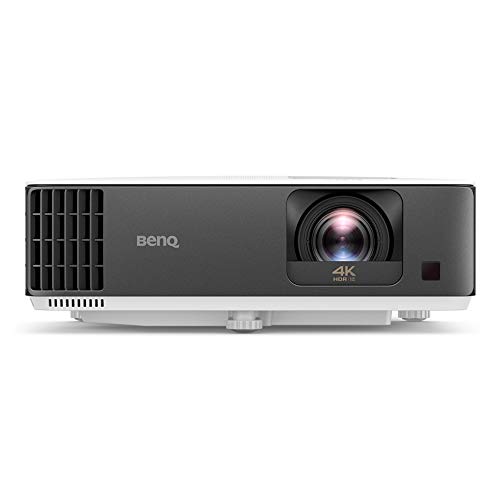
True Score
76766Experts
79261Customers
Mixed Reviews
 SAVE $300$1,699.00$1,399.00
SAVE $300$1,699.00$1,399.00Read More
Snapshot
Reasons to Buy
- Good brightness
- Low input lag
- Great connectivity
- Convenient throw ratio for gaming
Reasons to Avoid
- Subpar image quality
- Mediocre built-in audio quality
Specifications

Resolution 3840 x 2160 (4k) Refresh Rate 60 Hz 
Display Technology DLP 
Contrast Ratio 10,000:1 
Digital Keystone Yes 
HDR Yes 
Max Distance 168" 
Max Screen Size 200" 
3D Ready Yes 
Aspect Ratio 16:9 
Brightness 3000 lumens 
Depth 9.70" 
Height 4.3" 
Integrated Speakers Yes 
Light Source Laser 
Light Source Life 10000 hrs 
Min Distance 51" 
Min Screen Size 60" 
Noise Level 35 dB 
Portable Yes 
Smart Functionality Android TV, Bluetooth, Remote, USB 
Sync Technology – 
TV Tuner No 
ThrowType Short Throw 
Video Inputs HDMI 2.0, RS232, USB 
Weight 6.8 lbs 
Width 12" Yes – All Specs
Test Results
SDR Brightness (Lumens) 0 HDR Brightness (Lumens) 0 Contrast Ratio (x:y) 1,011 Input Lag (ms) 20 Color Gamut % (Rec. 709) 0 Color Gamut % (DCI P3 uv) 0 SDR Brightness (nits) 276 HDR Brightness (nits) 299 SDR Color Temperature (K) 0 HDR Color Temperature (K) 0 Color Gamut % (Rec. 2020) 0 Color Gamut % (BT.2020) 0 Color Gamut % (BT. 709) 0 All Tests
All Retailers
- $1,399.00$1,699Save $300
- $1,399.00$1,599Save $200
- $1,445.00$1,587Save $142
Our Verdict
If you’re after a budget projector that can handle gaming and outputs 4K, BenQ’s TK700STI is attractively priced and performs well. With a decently low input lag of 20 milliseconds, the TK700 is responsive enough for casual gaming and some light competitive gaming but will struggle if you’re chasing the lowest possible lag times.
Additionally, the projector offers SDR and HDR brightness levels of 276.2 and 299 lumens, respectively. These numbers might seem modest, but they’re taken at the screen itself, and given that brightness looks “brighter” the larger the screen gets, these numbers are actually quite good for watching content in brighter rooms. With a max screen size of 200”, the TK700 can blow games up to giant sizes and render them with great detail thanks to the 4K resolution.
Like its “brother,” the X3000i, the TK700 caps at 60 Hz. For games locked at 30 or 60 fps, this isn’t an issue. But if you enjoy smooth, high-framerate gaming, the low refresh rate will introduce tons of visual tearing. The projector doesn’t feature sync technology either, so there’s no real way to mitigate this tearing without locking your games down to 60 fps.
Despite the refresh rate limitations, the BenQ TK700STI is still an excellent option for gamers on a budget. Its decent input lag, great brightness, and high resolution make it a cost-effective way to get into 4K gaming on huge screens, as long as you are willing to compromise with playing your games at 60 or 30 fps.
Read Less
Which Criteria Matters for Testing Best Projectors for Gaming?
By focusing on these criteria (1 required, 1 nice to have), anyone can quickly and easily compare these projectors and how they’ll perform. This helps you make an informed decision and purchase a projector that will meet all of your needs.
| CRITERIA | RANGE | REQUIRED | DEFINITION |
|---|---|---|---|
| Input Lag | < 100 ms | Yes | The amount of time it takes for inputs to be registered and processed by the projector and shown on screen. |
| Color Gamut % (DCI P3) | > 90% | No (Nice to have) | The % of colors a projector can produce defined by the gamut. DCI-P3 is commonly used in film. |
| SDR Brightness | > 1500 lumens | No (Nice to have) | The amount of light the projector outputs from the lamp/bulb and projects onto the screen when playing SDR content, measured in lumens. |
Our Trusted Data Sources
We looked at 86+ projector reviewers and found that 16 are trustworthy (60%+ Trust Rating). The three we have listed below are our most trusted for projector.
- Pierre-Olivier Jourdenais – Rtings, LinkedIn
- Geoffrey Morrison – CNET, MuckRack
- Kam Valentine – Projector Reviews, MuckRack
Interested in a comprehensive analysis of our data sources? We’ve got you covered. Below, you’ll find a detailed list of every projector review website we’ve identified, organized by their respective Trust Ratings from highest to lowest. But we didn’t stop there. We’ve meticulously reviewed each publication and verified the data by checking whether the authors have bio links to MuckRack or LinkedIn. We’re committed to not only checking the facts but ensuring their veracity.
Projector Test Data & Results
Disclaimer:
Projectors are complex and difficult to test and evaluate, requiring extensive testing on the same level as televisions to paint a complete picture of how any given unit performs. Unfortunately, the testing behind projectors isn’t as rigorous, and a lot of the data we’ve compiled from expert reviewers has been incomplete at times. With different brightnesses measured from different sources, different color gamut tested and spotty contrast ratio measurements, we’ve done the best we can to leverage the available data when putting together these lists but have also trusted our True Score to help us make decisions when the data isn’t available.
1. Color Gamut % (DCI-P3) Test Results
Color Gamut % (DCI P3 uv)
> 90%
Acceptable range of performance
Definition: The % of colors a projector can produce defined by the gamut.
Units of Measurement: % (percentage of gamut covered)
Tools to Measure: Software
Why It’s Important:
DCI-P3 is commonly used in film. By having enough gamut coverage in this particular color space, movies will look accurate to how the creators intended.
Different color gamut are used for different types of media and represent the colors used by that form of media when creating the content. In the case of DCI-P3, this gamut is favored by film creators for making movies, so being able to cover large parts of it with a projector means the projector is better at showing movies.
We recommend a coverage of at least 90% to ensure you can reproduce accurate colors when watching movies and enjoy the films the way they were intended to be seen. Any lower and you begin to lose accuracy, which impacts how the movie looks by distorting the director’s creative vision.
Color Gamut DCI-P3 (%; higher is better; 0 = No Data)
2. Input Lag (ms) Test Results
Input lag is primarily an issue when it comes to playing video games on your projector. If you’re trying to enjoy fast-paced shooters or are using projector to play competitive modes, you’ll need a low input lag to “keep the projector out of your way”, so to speak. High input lag causes delays in your inputs and makes it harder to react to action on screen because your own physical reactions start to count for less than the projector’s ability to process what you’re doing.
For this reason, we recommend an input lag of 100 ms or less, but lower is always better, and for really competitive games we’d recommend less than 15 ms. Any more than that and your projector is better suited to playing games casually, though if you don’t play anything fast paced, input lag is less of an issue.
Input Lag (ms)
< 100 ms
Acceptable range of performance
Definition: The amount of time it takes for inputs to be registered and processed by the projector and shown on screen.
Units of Measurement: ms (milliseconds)
Tools to Measure: Input lag tool
Why It’s Important:
Low input lag is important to reduce delay when gaming.
Input Lag (ms; lower is better; 0 = No Data)
3. SDR Brightness (lumens) Test Results
Projectors have two ways you can realistically measure brightness: in lumens or in nits. Lumens are more common, but brightness in general matters because projectors have to project light strongly enough that it overcomes ambient light without losing detail or color.
Most of the time, a projector is going to be used in a fairly dark room to help give the unit the best chance of displaying content the way it was intended, but higher lumens output let you watch content in progressively bright spaces – or across longer distances on bigger screens. For standard dynamic range content, we recommend at least 1500 lumens for most home applications, but more isn’t a bad thing, and 3000 lumens or more are ideal.
SDR Brightness (lumens)
> 1500 lumens
Acceptable range of performance
Definition: The amount of light the projector outputs from the lamp/bulb and projects onto the screen when playing SDR content, measured in lumens.
Units of Measurement: Lumens
Tools to Measure: Lux meter
Why It’s Important:
Lumens affect how an image is going to look when projected on a screen. If the projector isn’t putting out enough light, the image quality will suffer.
SDR Brightness (lumens; higher is better; 0 = No Data)
Best Projectors for Gaming: Mistakes To Avoid
- High Input Lag: One of the most critical factors for gaming projectors is input lag, which is the delay between pressing a button on the controller and seeing the corresponding action on the screen. Avoid projectors with high input lag, as it can lead to noticeable delays and hinder gameplay responsiveness.
- Low Refresh Rate: Gaming projectors should ideally support a high refresh rate, typically 120Hz or higher, to deliver smooth and fluid gameplay. Choosing a projector with a low refresh rate can result in motion blur and stuttering during fast-paced gaming scenes. Similarly, when selecting the top projectors for sports viewing, it’s essential to opt for models with high refresh rates to ensure clear and uninterrupted action, particularly during fast-moving sports events.
- Inadequate Resolution: Opt for projectors with at least 1080p resolution (Full HD) for gaming to ensure sharp and detailed visuals. Lower resolutions may result in pixelation and reduced clarity, especially when gaming on larger screens. When considering an upgrade, comparing a 4K vs 1080p projector reveals that 4K projectors offer significantly higher resolution and finer detail, which can enhance the gaming experience on very large screens or when high-detail visibility is crucial.
- Poor Contrast Ratio: A high contrast ratio is crucial for gaming projectors to ensure vibrant colors and deep blacks, enhancing visual quality and immersion. Avoid projectors with low contrast ratios, as they can result in dull and washed-out images. Furthermore, when choosing a projector for bright rooms, it’s essential to select one with a high lumen output to combat ambient light, ensuring the contrast remains effective and the visuals maintain their clarity and vibrancy.
The Best Projectors for Gaming Tests Compared
Product |
True Score
|
SDR Brightness
|
HDR Brightness
|
Contrast Ratio
|
Color Gamut % (DCI P3 uv)
|
Input Lag (ms)
| |
|---|---|---|---|---|---|---|---|
| 94 |
|
|
|
|
| $2,999.99 $6,000 $2 |
| 86 |
|
|
|
|
| $1,799.00 $1,999 $200 |
82 | $1,148.95 | ||||||
| 76 |
|
|
|
|
| $1,399.00 $1,699 $300 |









